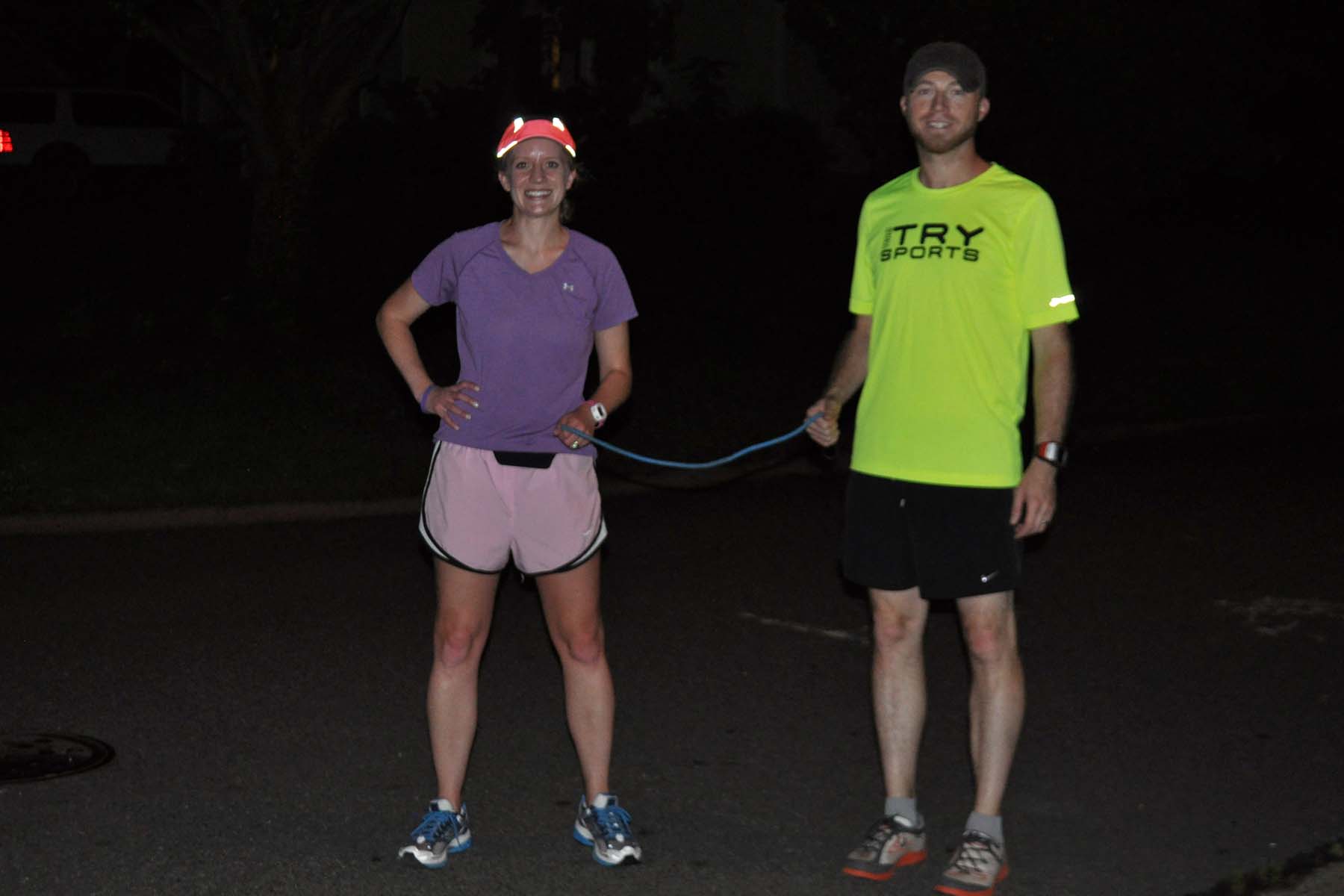This fall, I’ll run Charlotte’s Thunder Road Half Marathon blindfolded to honor the five-year anniversary of Taylor’s first 5K, raise awareness of Batten disease and support the gene therapy research Taylor’s Tale is co-funding at the University of North Carolina Gene Therapy Center. Last Wednesday, I celebrated National Running Day by going on my first trial run with my sighted guide, Andrew Swistak. Six days and one twisted ankle (mine) later, I felt ready for round two.
Shortly before 10 p.m., I wrapped my bum ankle and met Andrew at my mailbox with our lifeline, a three-foot bungee cord, draped over my shoulders.
Last week, I ran sighted for about 10 minutes to get used to the feeling of being “connected” to someone, and I practiced running with my eyes closed on a middle school track before we headed out into the unmarked, obstacle-riddled world.
This week, I closed my eyes as soon as I felt Andrew’s grip on the other end of that bungee cord. “Let’s go!” I said. I felt none of the roller coaster sensations I experienced when I closed my eyes at the beginning of our first run.
We ran 5.45 miles in 1:01:50 – good for a leisurely pace of 11:21 per mile – including multiple stretches during which we inched our way through a narrow, fenced path, waited for oncoming cars and stopped to step over speed bumps out of respect for my ankle. But we talked throughout the run (I talked about my sister a lot), and my ankle held up like a champ. When Andrew delivered me back to my driveway a few minutes before 11 p.m., long after most of the lights in the windows on my cul-de-sac winked out, I felt the meaning and the magnitude of this run – and our battle for people like Taylor – within every fiber of my sweat-soaked, adrenaline-charged body in the muggy, quiet June night.
Wind, rain and thunder pounded our neighborhood just 30 minutes ago, but all signs point to clear skies by later tonight. If you live close by and happen to be up and about in three or four hours, you might just catch a glimpse of two runners connected by a three-foot bungee cord and a shared mission, cutting through the black night, running toward the light.
I am running the Thunder Road Half Marathon to support gene therapy co-funded by Taylor’s Tale at the University of North Carolina Gene Therapy Center. Donations to this cause are 100 percent tax-deductible. To support my run and our fight to develop treatments for Batten disease and other genetic diseases, click here.

